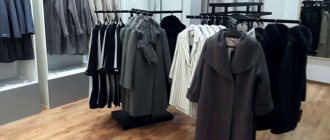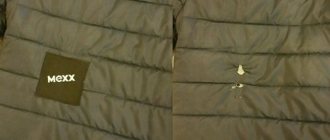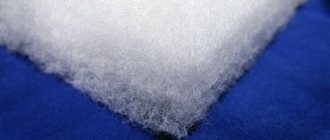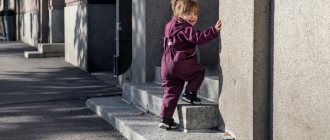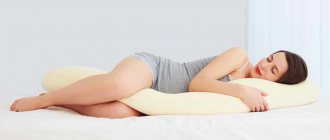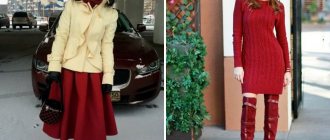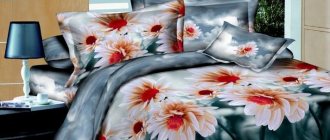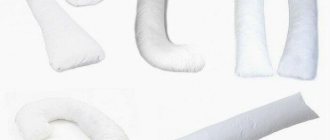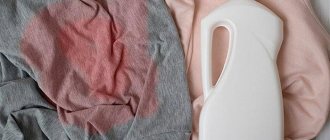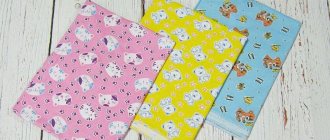Home / Fillers
Back
Published: 06/16/2021
Reading time: 5 min
0
12
Bio-down appeared in the 70s. last century and quickly became one of the most popular substitutes for natural materials. In terms of its qualities, it is not much inferior to fluff and wool, and in terms of safety and harmlessness to the body, it is even superior. Initially, bio-down was used in outerwear and equipment for polar explorers, but soon became indispensable in other industries.
- 1 History of appearance and production
- 2 Pros and cons of filler
- 3 Temperature
- 4 Comparison with popular insulation materials
- 5 Application of material
- 6 How to wash eco-down
- 7 Product reviews
- 8 Conclusion
History of appearance and production
The new material, called bio-fluff, appeared by accident: due to a failure during the technological process. Thanks to an error, scientists obtained a light, voluminous and heat-saving material.
The material received the prefix bio- in its name for many reasons. First of all, due to the fact that it is made from plant components. More precisely, corn. The content of natural substances in the final substance is 37%.
Schematically, the insulation production technology is as follows:
- Corn harvest.
- Extraction of glucose from plant matter.
- Starting the fermentation process by adding microorganisms to glucose.
- Fermentation of the mass, resulting in the natural synthesis of 1,3-propanediol, a compound capable of polymerization.
- Treatment of a substance with terephthalic acid to obtain a polymer (patented as Sorona).
Compared to the production of other types of insulation, the production of bio-down is more economical and safer for nature. Electricity is consumed by 30% less, harmful waste is generated by 63-65%.
Pros and cons of filler
Bio-down is a unique material for many reasons. Its advantages:
- Environmental friendliness: bio down insulation is produced on a biological basis, its structure is as similar as possible to natural down. The material does not pollute the environment and is safe for the human body.
- Excellent warming properties: bio-down was originally developed as a material for polar explorers, so it can protect against severe frosts down to -40 degrees.
- Elasticity: after compression and drying, it quickly straightens, returning to its original shape.
- Softness, pleasant tactile properties: bio-fluff does not prick and does not irritate the skin.
- Hypoallergenic: the material does not emit toxic substances and does not cause a negative reaction in the body.
- Easy to use and maintain. With proper care, it can withstand numerous washes without loss of quality.
- Cost-effective: thanks to its three-dimensional structure, bio-down fills the maximum space, so much less is consumed.
- Durability: the insulation is not afraid of dampness, mold and mildew.
- Wide range of applications: bio-down is indispensable in many areas of life.
As for the disadvantages, they also exist:
- electrification: the material accumulates static electricity;
- vulnerability to high temperatures: bio-down is destroyed or deformed from too hot washing, drying near heating devices;
- low degree of hygroscopicity: poorly absorbs and removes moisture from the body.
Important! To avoid the greenhouse effect when wearing clothes, you should wear hygroscopic underwear underneath and select items with a thickness of insulation that matches the air temperature.
Features of the material
But how is the warm bio-down insulation produced? It is made from raw materials of plant origin. As a result, we can safely say that it is hypoallergenic and completely safe for use. Bio-down fibers have a three-dimensional spherical shape, and the filler itself has a crease-resistant and silky structure. The insulation fully complies with environmental and sanitary standards. It takes care of the health and comfort of each consumer, since it is elastic, lightweight and hypoallergenic.
Eco-down filler - what is it, it has the following characteristic features:
- Fluffiness and softness. Based on consumer reviews, it can be argued that the insulation is a rather voluminous material. The spherical shape provides not only a silky texture and compression resistance, but also natural fluffiness.
- Excellent thermal insulation properties. The presented material is ideal for sewing outerwear as it retains heat well.
- Easy to care for. After numerous washes and during use, the insulation does not penetrate the fabric, and down items do not collapse or deform. To improve thermal insulation characteristics, fibers can be mixed with natural down in any proportions.
Temperature
Frosts are not terrible for bio down in outerwear, but what temperature is it designed for? Manufacturers claim that this issue is purely individual, as in the choice of clothing. The comfort of outerwear depends on the volume of filler and its quality, the material of the lining, the top of the jacket and the heat exchange of a person. Dense material with a water-repellent layer retains heat much better than others, even with a small thickness of insulation.
All outerwear with this insulation can be divided into the following groups:
- Volumetric products, the filling of which consists of bio-down, can easily withstand frosts down to -35 C.
- Medium-thick padding of outerwear is intended for temperatures not lower than -15 C. The label must show two snowflakes or the inscription Medium Padding.
- Products with light padding made of synthetic fluff are designed for temperatures not lower than -10 C.
Disadvantages of the material
Consumer reviews are mostly positive, but there are still some disadvantages .
- This filler makes things more voluminous compared to natural down, and this is not liked by women who always want to look slim.
- The cost, as a rule, is significantly higher or is on the same level as products made from natural down.
- Unable to provide the necessary removal of moisture from the body.
- Unresistant to open fire and high temperatures.
- Accumulates static electricity, like other synthetic materials.
Temperature
It is believed that bio fluff is a material that can withstand up to -40 degrees. However, when determining the optimal temperature for wearing clothes, it is necessary to take into account several factors: the body’s ability to resist cold, the type of outer material, and the thickness of the insulation.
When choosing clothes, you need to focus on the density of bio-down filling:
- 100 gsm m: the products warm well at temperatures from -5 to -10 °C. This layer of bio-down is used to insulate demi-season clothing;
- 150 gsm m: thickness is designed for cold temperatures from -15 to -20 °C. The padding is recommended for everyday winter items;
- 200 gsm m: for frosts -20-25 °C;
- 400 gsm m: withstands up to -35 °C. Used for sewing workwear and uniforms.
Important! Manufacturers do not recommend padding thicker than 200 g/m2 for everyday items, as it will be uncomfortable to move in the clothes. To increase the heat-saving properties of the product, you need to use a denser material for the top layer.
How to care for things with eco-down?
In order for a thing to serve as long as possible, it needs to be properly cared for. Fortunately, eco-down is an unpretentious material. You don’t have to go to the dry cleaner; you can get your winter jacket in order at home. The insulation does not thin out, retains its original shape, and does not bunch up.
Is it washable?
Machine washable, but it is better to use the delicate cycle. Follow these guidelines:
- do not wash the jacket in hot water, no more than 40 ° C;
- the spin mode should not exceed 600 rpm;
- Do not dry clothes on a radiator or near a radiator;
- hang the product on hangers, place it on the balcony and wait until it dries completely.
Housewives often face the following problem: after washing, white powder spots appear on a winter jacket with eco-down. To prevent this from happening, give preference to gel powder . Set the additional rinse mode. This way you will be sure that the item will not have to be washed again. And don't forget about fabric softener. It will give the item a pleasant smell, and after washing the down jacket will not look wrinkled.
What to do if the cuffs and pockets of the product are very dirty? Arm yourself with laundry soap or any stain remover, apply the product to the contaminated areas, and leave the down jacket for 20–30 minutes. After this, the winter jacket can be put into the washing machine.
Do not store eco-down products in a vacuum bag for a long time.
A pre-dried jacket can be ironed. But be careful and choose your iron temperature setting based on the material of the top. It is recommended to store the item in a closet, in a horizontal position. Fold the down jacket carefully, do not squeeze it too much, otherwise kinks may form at the folds.
Comparison with popular insulation materials
It is not for nothing that bio-fluff is considered one of the best materials. Compared to other fillers, it has many advantages:
| Competitor material | Differences |
| Sintepon | Synthetic material made from polyester fibers. It is cheaper than bio-down, retains heat worse, and is less resistant to damage. It tears and wrinkles faster and lasts much less. |
| Sintepooh | Inferior to bio-down in wear resistance. It becomes unusable after several washes, but is much cheaper. |
| Thinsulate, isosoft | Insulation materials can withstand frosts down to -60 °C and are indispensable in sewing workwear. Disadvantage: high price compared to bio-down. |
| Holofiber | Similar to bio-down in structure, elasticity and firmness. Holofiber is cheaper, but fails faster. |
| Ecopooh | Can cause allergies. In contrast, bio-fluff does not provoke unwanted reactions, therefore it is safe for newborns and people with hypersensitive bodies. |
Reference! Recommended consumption of bio-down: jacket – 450 g, blanket – 1200 g.
Advantages and disadvantages of insulation
Synthetic bio fluff, advantages:
- Good thermal insulation, one and a half times higher than that of natural analogues.
- Light weight, does not impede movement.
- High moisture resistance.
- Does not lose properties in frosts down to -40°.
- Does not absorb odors and does not irritate the skin.
- “Keeps its shape”, the fiber easily recovers after deformation.
- Long service life.
- Retains heat well.
- Easy to care for: washable in a regular machine, dries quickly, does not clump or pill.
- High wear resistance, practicality.
- Eco-friendly and comfortable material.
- Does not cause allergies.
There are also disadvantages:
- Afraid of high temperatures and open flames. When overheated, it becomes deformed.
- Does not remove moisture satisfactorily.
- Can accumulate static voltage (“electric shock”).
Important! It is recommended to wear hygroscopic clothing under a down jacket or jacket with this insulation, which will absorb moisture coming from the body.
Bio-down is lightweight, has good thermal insulation and does not absorb odors.
Application of material
Initially, biodown was used in down jackets for polar explorers. Over time, the scope of application has expanded significantly.
Author:
Zakharova Nina Afanasyevna
I hope you like my article! If you find any shortcomings, just write to me about it! I am always ready for a conversation and will answer any questions you have, ask them!
